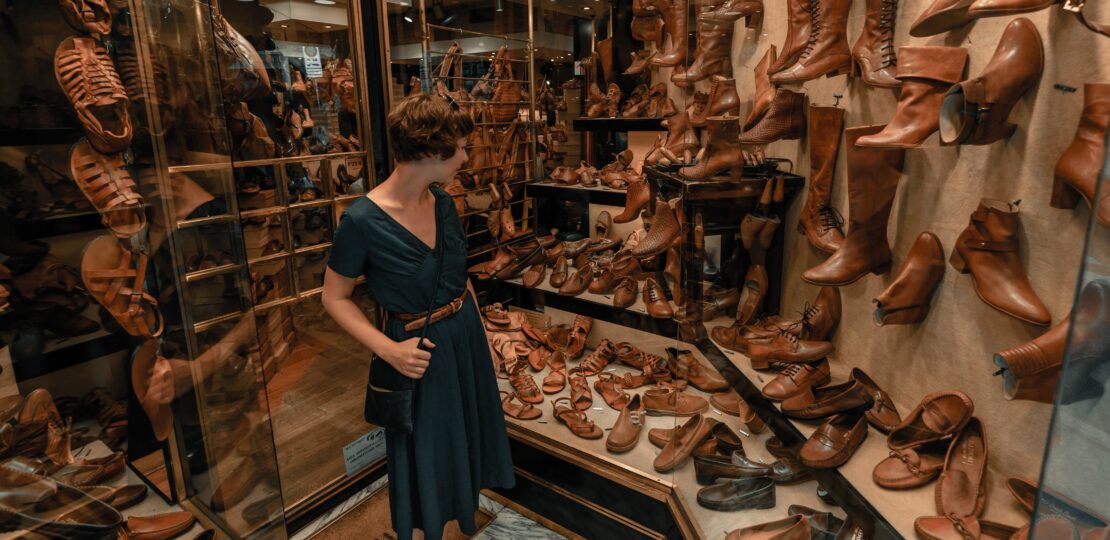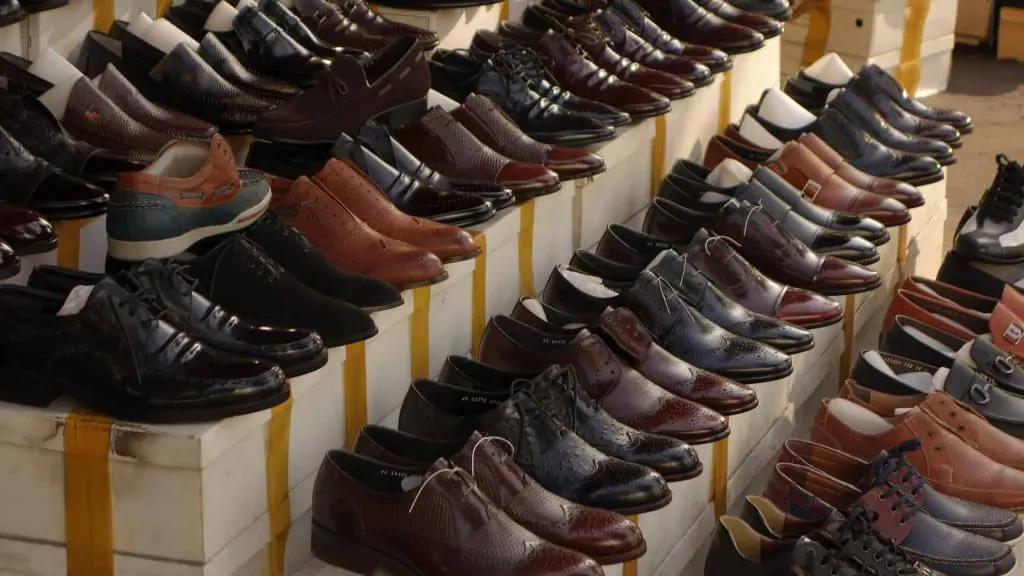Targeting $50 Billion in Exports by 2030: The Future of India’s Leather and Footwear Industry
November 25, 2024 | by gurjeetsaini@yahoo.com

India’s leather and footwear industry has been an essential player in the global market for decades. With a strong export base and an impressive history of innovation, the sector has become one of India’s leading industries, contributing significantly to the nation’s economy. In an encouraging move to further boost this sector, Commerce and Industry Minister Piyush Goyal, in a recent address at the India International Footwear Fair, set ambitious targets for the leather and footwear industry. Goyal called for a concerted effort to achieve $50 billion in exports by 2030 and emphasized the sector’s immense potential to generate employment for 10 million people by the end of the decade.
These bold goals come at a pivotal time when the Indian leather industry is already a global leader. As the world’s second-largest exporter of footwear and a significant producer of leather goods, India stands poised to expand its share of the global market. Minister Goyal’s vision to elevate the sector to new heights not only highlights the importance of this industry to India’s economy but also underscores its potential as a major job creator in the coming years.
The Path to $50 Billion Exports by 2030
The target of reaching $50 billion in exports by 2030 is ambitious but achievable, given the sector’s current trajectory and the government’s continued push for growth. In 2023-24, India’s leather and footwear industry generated significant export revenue, but Goyal’s vision calls for more substantial growth.
Several factors can drive this increase in exports:
- Leveraging Free Trade Agreements (FTAs):
Minister Goyal emphasized the importance of India’s free trade agreements (FTAs) in expanding access to global markets. FTAs can offer Indian leather and footwear companies preferential trade terms, reducing tariffs and making Indian products more competitive on the international stage. These agreements, particularly those with key markets in Europe, the United States, and Asia, can serve as a springboard to increase exports. - Improving Quality and Innovation:
India has a long history of producing high-quality leather products. By focusing on further enhancing quality standards and leveraging technological advancements, the Indian leather and footwear industry can increase its share in global markets. The emphasis on innovation, especially in sustainable and eco-friendly leather production, can also open up new avenues for growth in global markets that prioritize sustainability. - Expansion into Emerging Markets:
Beyond traditional markets, India’s leather and footwear industry has an opportunity to expand into emerging economies in Africa, the Middle East, and Southeast Asia. As disposable incomes rise in these regions, there is an increasing demand for affordable yet high-quality leather goods and footwear. - Branding and Marketing:
Building strong global brands and improving marketing efforts will play a significant role in achieving the $50 billion target. Indian companies must focus on strengthening their presence at international trade shows, collaborating with global retailers, and creating products that appeal to international consumers’ tastes and preferences.
Creating 10 Million Jobs: The Employment Potential
Piyush Goyal’s call to create one crore (10 million) jobs within the leather and footwear sector is an ambitious yet achievable goal. Currently, the industry employs around 40 lakh (4 million) people, and with the proper focus on growth, job creation, and skill development, this number can be significantly increased.
Key factors to support employment growth include:
- Skill Development and Training:
As the industry expands, there will be a growing demand for skilled labor. India can capitalize on its large young workforce by focusing on skill development programs aimed at creating specialized workers for both the manufacturing and design aspects of the leather and footwear industry. These training programs can be in collaboration with industry leaders to ensure they meet international standards. - Rural Employment Opportunities:
The leather industry in India is predominantly located in rural areas, where it supports local economies. By expanding production facilities and encouraging the growth of small and medium-sized enterprises (SMEs) in these areas, the industry can contribute significantly to rural employment. Additionally, localized production can also help reduce logistics costs and make the sector more competitive globally. - Promoting Women’s Employment:
The leather and footwear industry can also focus on increasing the participation of women in the workforce. By offering training programs, improving working conditions, and providing more leadership opportunities for women, the industry can create a more inclusive and diverse workforce, while simultaneously increasing its productivity. - Incentives for Small Manufacturers:
By providing incentives and subsidies to small-scale manufacturers, India can nurture the growth of new businesses in the leather and footwear industry. These companies can play a critical role in job creation and innovation, helping to meet the $50 billion export goal.
Building a Strong Indian Leather and Footwear Brand
Minister Goyal’s speech at the India International Footwear Fair also touched upon the need for the leather industry to build a strong, unified brand identity for India. Just like Italy is synonymous with luxury leather goods, India can position itself as a hub for high-quality, affordable, and innovative leather products.
This can be achieved through:
- Industry Collaboration:
The government, industry bodies, and individual companies must collaborate to build a strong brand image for Indian leather products. National campaigns, trade missions, and international partnerships can help raise awareness about India’s capabilities in producing high-quality leather goods. - Sustainability Initiatives:
As consumers become increasingly conscious of the environmental impact of the products they purchase, India’s leather industry can tap into the growing demand for sustainable and ethically produced leather goods. By focusing on eco-friendly leather production methods and reducing waste, the industry can appeal to consumers who prioritize sustainability. - Investment in Infrastructure:
To meet the growing demand, the industry will need better infrastructure, including logistics, distribution channels, and processing facilities. Investments in these areas will ensure that India remains competitive in the global leather market.
Conclusion
India’s leather and footwear industry stands at the cusp of a golden opportunity. With the government’s support, especially through free trade agreements and industry collaboration, the sector can aim for $50 billion in exports by 2030. The potential for creating 10 million new jobs in the sector is equally promising. By focusing on skill development, sustainability, innovation, and branding, India can secure its place as a global leader in the leather and footwear market. The target may be ambitious, but with the right policies and strategic efforts, it is undoubtedly within reach.
RELATED POSTS
View all



